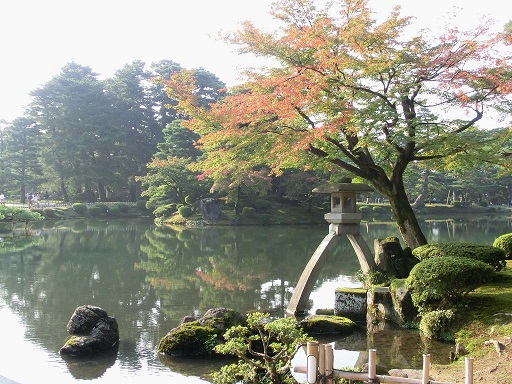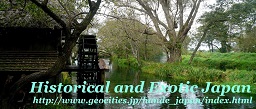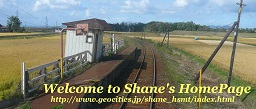Yugao-tei Tea House was built in 1774. It was one of four original tea houses that MAEDA Harunaga built.
Regarding Kaiseki Pagoda, nobody knows how and why it was placed in Kenrokuen Garden. It is said to be brought from Korea in the late 16th century, or having been removed from Kanazawa Castle.
You will also see Midori-taki Waterfall behind Kaiseki Pagoda.
In front of "Yugao-tei" Tea House, a saucer is placed.
This is a fossil plant of the palm family.
This fossil saucer embodies in "wabi" and "sabi", which are the beauty to be found in poverty and simplicity.
The name of "Kenrokuen" Garden comes from the following six features as for an excellent landscape garden:
"Spaciousness", "Seclusion", "Contrivance", "Antiquity", "Water-Courses" and "Panoramas"

 Home Page in Japanese: "Shane's HomePage"
Home Page in Japanese: "Shane's HomePage"

 Home Page in Japanese: "Shane's HomePage"
Home Page in Japanese: "Shane's HomePage"